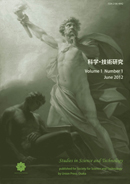Volume 2, Issue 2
Displaying 1-15 of 15 articles from this issue
- |<
- <
- 1
- >
- >|
Preface
-
2013Volume 2Issue 2 Pages 83-84
Published: 2013
Released on J-STAGE: January 07, 2014
Download PDF (1132K)
Feature Article
-
2013Volume 2Issue 2 Pages 85-90
Published: 2013
Released on J-STAGE: January 07, 2014
Download PDF (1245K)
Series
-
2013Volume 2Issue 2 Pages 91-100
Published: 2013
Released on J-STAGE: January 07, 2014
Download PDF (1336K)
General Article
-
2013Volume 2Issue 2 Pages 101-106
Published: 2013
Released on J-STAGE: January 07, 2014
Download PDF (1825K)
Original Article
-
2013Volume 2Issue 2 Pages 107-112
Published: 2013
Released on J-STAGE: January 07, 2014
Download PDF (986K) -
2013Volume 2Issue 2 Pages 113-116
Published: 2013
Released on J-STAGE: January 07, 2014
Download PDF (1939K) -
2013Volume 2Issue 2 Pages 117-122
Published: 2013
Released on J-STAGE: January 07, 2014
Download PDF (1136K) -
2013Volume 2Issue 2 Pages 123-126
Published: 2013
Released on J-STAGE: January 07, 2014
Download PDF (778K) -
2013Volume 2Issue 2 Pages 127-130
Published: 2013
Released on J-STAGE: January 07, 2014
Download PDF (440K) -
2013Volume 2Issue 2 Pages 131-136
Published: 2013
Released on J-STAGE: January 07, 2014
Download PDF (754K) -
2013Volume 2Issue 2 Pages 137-142
Published: 2013
Released on J-STAGE: January 07, 2014
Download PDF (1093K)
Proposal
-
2013Volume 2Issue 2 Pages 143-146
Published: 2013
Released on J-STAGE: January 07, 2014
Download PDF (1111K)
Research Letter
-
2013Volume 2Issue 2 Pages 147-150
Published: 2013
Released on J-STAGE: January 07, 2014
Download PDF (1351K)
Technical Report
-
Development of a microbubble generator and practical use of a contaminated water purification system2013Volume 2Issue 2 Pages 151-154
Published: 2013
Released on J-STAGE: January 07, 2014
Download PDF (955K)
Note
-
2013Volume 2Issue 2 Pages 155-162
Published: 2013
Released on J-STAGE: January 07, 2014
Download PDF (1772K)
- |<
- <
- 1
- >
- >|
